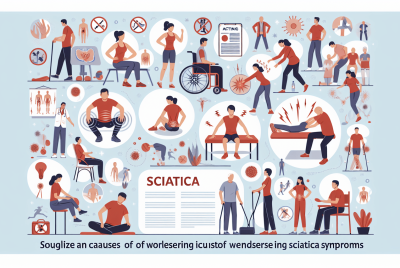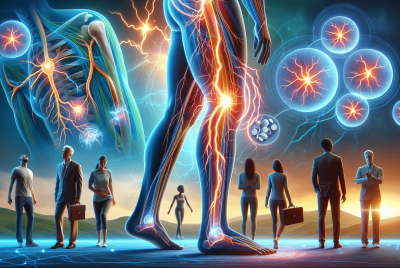Comprehensive Guide to Mattresses & Back Pain: A Commonly Overlooked Issue…2023
Introduction
Hello there! As an avid researcher and advisor on the subject, I’ve dedicated significant time to understand the relationship between Mattresses & Back Pain. If you’re experiencing this discomfort, you’re not alone. It’s a common issue faced by many. Choosing the right mattress is a crucial step in managing your back pain, so let’s explore this in-depth together.
Causes of Back Pain
Back pain can have a multitude of causes, such as lifting heavy objects, maintaining poor posture, or leading a sedentary lifestyle. Other triggers could be more severe, such as herniated discs, arthritis, or diseases like osteoporosis. Each person’s back pain is unique and requires an individualized approach.
How Mattresses & Back Pain Can Be Closely Related
A good night’s sleep is crucial for your overall well-being and for tackling back pain. An inadequate mattress can worsen back pain by encouraging poor sleeping postures, not providing enough support, leading to muscle strain, and failing to keep your spine aligned.
Anatomy of a Mattress
Layers of a Mattress
A typical mattress contains several layers. The top layer or the ‘comfort layer’ is what you feel when you lie down. It’s usually made of materials that conform to your body shape. The core or ‘support layer’ is beneath the comfort layer and provides overall support.

Mattress Materials and Their Impact on Support
Mattresses are made from a variety of materials. Memory foam mattresses contour to your body shape, offering excellent personalized support. Latex mattresses provide a good balance of comfort and support with a bit of bounce. Innerspring mattresses have a bouncy feel, while hybrid mattresses combine the features of foam or latex and innerspring mattresses.
Different Types of Mattresses
Each type of mattress has unique characteristics that can influence back pain. Memory foam and latex mattresses are great for contouring and pressure relief, while innerspring and hybrid mattresses offer strong support and easy movement. Adjustable mattresses can be modified to match your comfort preference.
Features to Look for in a Mattress
Firmness
Firmness is one of the most critical attributes of a mattress. A mattress that is too soft may cause your back to sink, disrupting spinal alignment. On the other hand, a mattress that is too firm may be uncomfortable and create pressure points.
Support
Support refers to how well a mattress keeps your body on a flat and even plane. A supportive mattress will maintain your body’s natural spinal alignment.
Comfort Layer
The comfort layer of the mattress needs to be comfortable and pressure-relieving. It should conform to your body’s shape and cushion your body’s pressure points.
Edge Support
Edge support is crucial if you frequently sit or sleep near the edge of the mattress. It ensures that the mattress won’t sag and that you’ll be supported no matter where you are on the bed.
Understanding Mattress Firmness
Choosing the right level of firmness in your mattress is key to managing back pain. Side sleepers may require a softer mattress, back sleepers a medium-firm mattress, while stomach sleepers may need a firmer mattress to maintain spinal alignment.
The Role of the Comfort Layer
The comfort layer contributes significantly to the overall feel and performance of the mattress. A good comfort layer will contour to your body’s shape, helping to reduce pressure points and mitigate back pain.
The Importance of Edge Support
Edge support can make a big difference in the lifespan and usability of a mattress. Good edge support means more usable sleeping surface and a sturdy edge for sitting.
The Right Mattress for Different Sleep Positions
The best mattress for you largely depends on your preferred sleep position. Side sleepers might need a softer mattress to cushion their shoulders and hips, while back and stomach sleepers might need a firmer mattress to prevent their hips from sinking and causing back pain.
Addressing Common Misconceptions
It’s crucial to understand that while a good mattress can significantly contribute to alleviating back pain, it’s not a cure-all. It should be part of a holistic approach to back pain management, including correct posture, physical therapy, and regular exercise.
Taking Care of Your Mattress
To maintain the support and comfort a mattress provides, it’s essential to care for it properly. This includes regular cleaning, rotating the mattress every few months, and using a mattress protector to safeguard against spills and stains.
The Role of Pillows and Other Accessories
Pillows play a vital role in maintaining spinal alignment, just like your mattress. Depending on your sleeping position, the type of pillow you need will vary. Other accessories, such as mattress toppers, can also enhance the comfort and supportiveness of your mattress.
When to Replace Your Mattress
If your mattress is over 7-10 years old or you’re waking up with stiffness, it’s likely time for a replacement. Pay attention to signs of wear and tear like sagging, lumps, or creaking noises.
Additional Considerations
When choosing a mattress, it’s also important to consider factors like price, warranty, and trial periods. Remember, an expensive mattress doesn’t always mean it’s the best fit for you.
Conclusion
In the end, the right mattress for alleviating back pain depends on various factors. It’s about finding a balance of comfort, support, and personal preference. Remember, your sleep is paramount, so it’s worth investing time in finding the right mattress for you.
Further Resources
- Kovacs, F. M., Abraira, V., Peña, A., Martín-Rodríguez, J. G., Sánchez-Vera, M., Ferrer, E., … & Muriel, A. (2003). “Effect of firmness of mattress on chronic non-specific low-back pain: randomised, double-blind, controlled, multicentre trial.” The Lancet, 362(9396), 1599-1604. Link
This randomized, double-blind, controlled, multicentre trial conducted by Kovacs et al. demonstrated the benefits of a medium-firm mattress in alleviating chronic non-specific low-back pain. The study provides valuable insights into the importance of mattress firmness in relation to back pain.
- Jacobson, B. H., Gemmell, H. A., Hayes, B. M., & Altena, T. S. (2006). “Effectiveness of a selected bedding system on quality of sleep, low back pain, shoulder pain, and spine stiffness.” Journal of Chiropractic Medicine, 5(4), 128-134. Link
Jacobson et al.’s study explored the impact of bedding systems on sleep quality, back pain, shoulder pain, and spine stiffness. The research highlighted the importance of selecting the right mattress and bedding system for improving sleep quality and reducing pain symptoms.
*Please note that while these sources provide valuable information, they should be interpreted in conjunction with a broader understanding of the topic. You may want to consult with a healthcare professional or a sleep expert for personalized advice.
FAQs
- Can a mattress cause back pain? Yes, a mattress that does not provide proper support can contribute to or worsen back pain.
- What type of mattress is best for lower back pain? Often, a medium-firm mattress provides the best balance of comfort and support for people with lower back pain.
- How often should I replace my mattress? Generally, a mattress should be replaced every 7-10 years, but it can depend on the quality and care of the mattress.
- How can I tell if my mattress is causing my back pain? If your back pain is worst in the morning and improves throughout the day, it might be a sign your mattress is contributing to your discomfort.
- Does a more expensive mattress mean better back support? Not always. While high-quality, expensive mattresses often provide excellent support, it’s possible to find affordable mattresses that offer great back support as well.




